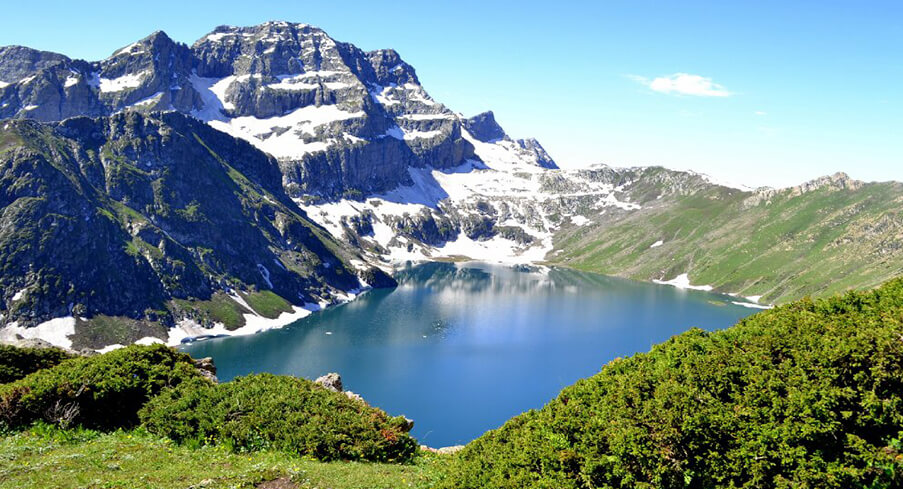Tarsar Marsar Trek is becoming a popular hiking expedition for adventurers all over. The 48 km hike through the laps of the Karakoram and PirPanjal ranges and rising to as high as the Kolahi Peak at 4200 m is not a cakewalk for everyone.
However, is the trek too difficult? Is trekking through the path safe? Would you be able to finish it without exhausting yourself completely? Let’s find out the feasibility of the Tarsar Marsar trek.
Tarsar Marsar Trek: The Itinerary
The expedition is a 7-day trek beginning at the Aru valley and covering around 5-6 km every day except for the first and the last day when you might have to walk around 10-12 km.
Day 1 – Srinagar to Aru
– Around 103 km covered by car in a 3-hour journey
Day 2 – Aru to Lidderwat
– Around 13 km trek
– Rated as easy
Day 3 –Lidderwat to Shekwas
– Around 6 km trek
– Rated as moderate
– 2 km climb
Day 4 –Shekwas to Tarsar
– Around 5 km trek
– Rated as moderate
– Gradual altitudinal increment
Day 5 –Tarsar to Sundersar
– Around 5 km trek
– Moderate level difficulty
– First ascension, then a small level of descent, and again ascension towards Sundarsar lake.
Day 6 –Sundarsar to Marsar and Sonmasti
– Around 7-8 km trek
– Rated as Moderate
– Ascend towards Marsar lake and then a little descent towards Sonmasti
Day 7 –Sonmasti to Sumbal and Srinagar
– A long trek through meadows
– Rated as easy
– Descent from Sonmasti to Sumbal
Tarsar Marsar trek: The Altitudinal Difficulties
The altitudinal rise during the whole trek is so gradual that you would not feel any difficulties. The gain in altitude is around 1000 ft every day and at max around 1500 ft per day. At places you have to ascent, it is very easy and leisurely. There are no steep climbs.
So, altitudinal gain, though at first look looks much, feels natural.
Distance Covered Per Day
Considering the usual Himalayan treks where the distance covered each day goes to as high as 18 km, the average distance each day on Tarsar Marsar Trek is around 5 km. On the first day when you have to cover around 13 km from Aru to Lidderwat, you will be gaining only around 1000 ft in altitude which is not much. Also, you will be walking in the valley with a river flowing alongside.
On the last day, the trek is a descent towards Sumbal which is very easy and comfortable, almost fun.
Tricky sections of the Trek
- Tarsar Pass
As you cross the Tarsar Pass, the terrain on the other side is loose and pebbly. It is tough to hold a grip on such ground. You will find yourself slipping on the descent.
- Jagmati Meadows
The meadows though are full of beautiful flowers, after crossing it, you will come across a boulder section in the pathway. The boulders are so big and you will have to be very careful about where you put your feet.
- Sundarsar to Marsar Lake
The path is flanked by tall mountains. The way to cross it is through a col. When the weather is rainy or there is snow, the col becomes a complicated path and a bit slippery. However, with good trekking poles and shoes, you can navigate properly.
This is all about the difficulty of the trek. It is not a very difficult one and that is why it is accessible to kids as well as elders. The adventure and thrill of the trek would motivate you throughout and help you pass stumbles easily.
However, if you are a pro trekker and want some challenge in the terrain and difficulty while you are on a trail, then the gorgeous Kashmir Great Lakes Trek is for you.
Read more about travel industry
Why is the Kashmir Great Lakes Trek famous? – Read here
